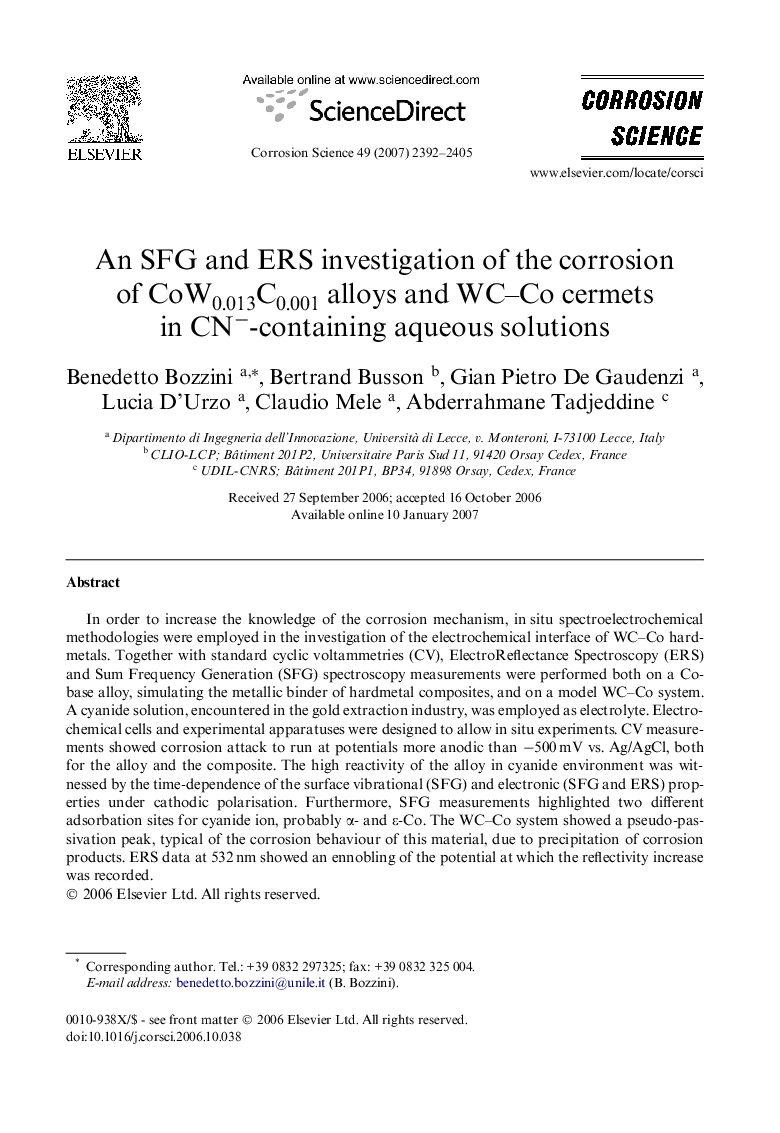| Article ID | Journal | Published Year | Pages | File Type |
|---|---|---|---|---|
| 1472199 | Corrosion Science | 2007 | 14 Pages |
Abstract
In order to increase the knowledge of the corrosion mechanism, in situ spectroelectrochemical methodologies were employed in the investigation of the electrochemical interface of WC-Co hardmetals. Together with standard cyclic voltammetries (CV), ElectroReflectance Spectroscopy (ERS) and Sum Frequency Generation (SFG) spectroscopy measurements were performed both on a Co-base alloy, simulating the metallic binder of hardmetal composites, and on a model WC-Co system. A cyanide solution, encountered in the gold extraction industry, was employed as electrolyte. Electrochemical cells and experimental apparatuses were designed to allow in situ experiments. CV measurements showed corrosion attack to run at potentials more anodic than â500 mV vs. Ag/AgCl, both for the alloy and the composite. The high reactivity of the alloy in cyanide environment was witnessed by the time-dependence of the surface vibrational (SFG) and electronic (SFG and ERS) properties under cathodic polarisation. Furthermore, SFG measurements highlighted two different adsorbation sites for cyanide ion, probably α- and ε-Co. The WC-Co system showed a pseudo-passivation peak, typical of the corrosion behaviour of this material, due to precipitation of corrosion products. ERS data at 532 nm showed an ennobling of the potential at which the reflectivity increase was recorded.
Related Topics
Physical Sciences and Engineering
Materials Science
Ceramics and Composites
Authors
Benedetto Bozzini, Bertrand Busson, Gian Pietro De Gaudenzi, Lucia D'Urzo, Claudio Mele, Abderrahmane Tadjeddine,
